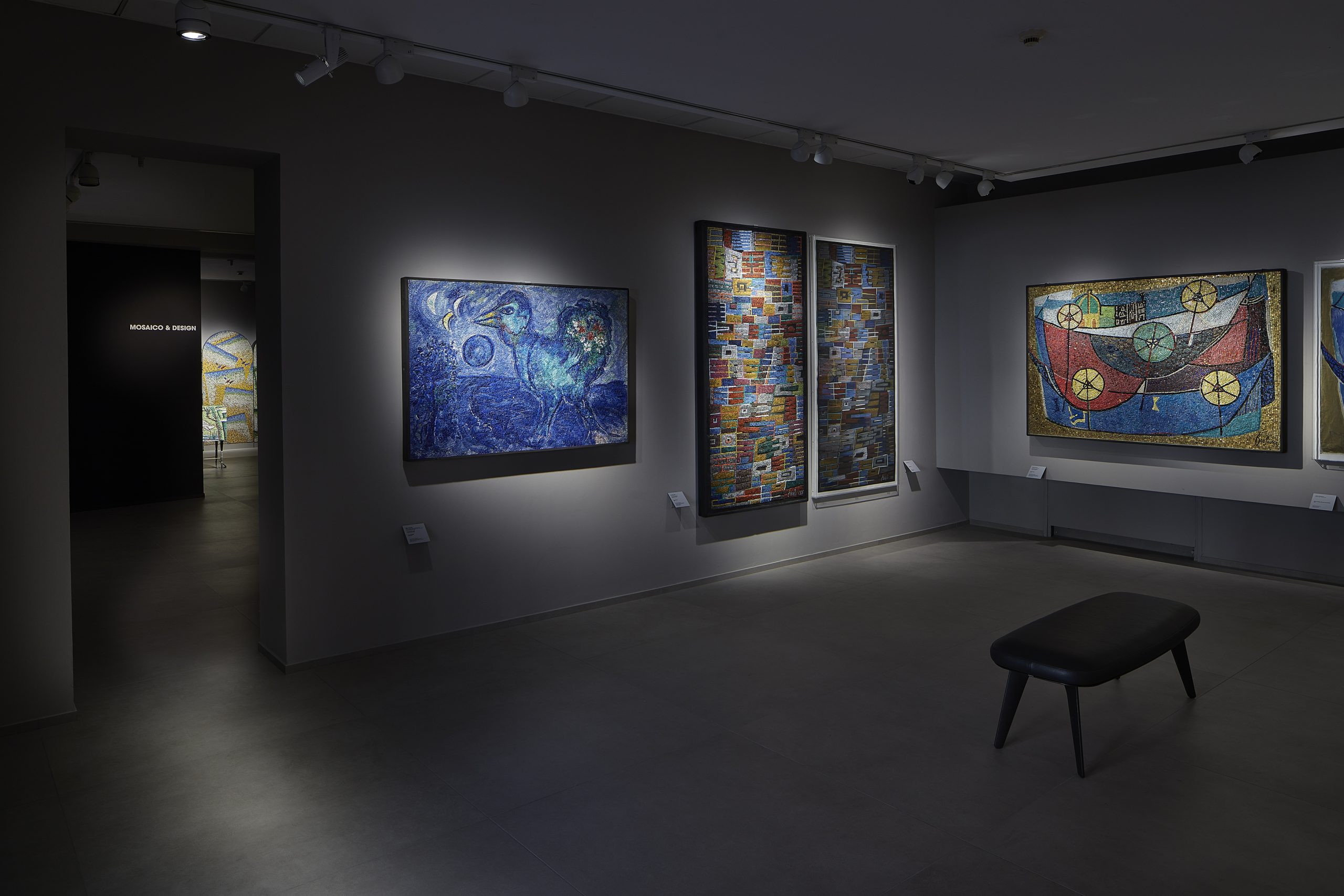
Exhibition of the Modern mosaics
During the first of the Fifties, when in Italy post war the different experimental art movements estabilished themselves with the economic recovery. These art movements were born from the necessity to find a language which went away from the previous historic avantgardes with the necessity of an international comparison, in Ravenna, thanks to the intuition of Giuseppe Bovini, archaeologist and academic, it’s witnessed the ancient and traditional mosaic’s evolution.
In 1950 Bovini, named supervisor of the Superintendence of Ravenna and director of the National Museum, came into contact with the Mosaic artists’ Group of the Accademia di Belle Arti of city of Ravenna, founded by Ines Morigi Berti, Sergio Cicognani, Maria Fabbri, Isler Medici, Lino Melano, Zelo Molducci, Libera Musiani, Romolo Papa, Eda Pratella, Antonio Rocchi, Renato Signorini in 1948 and directed by Giuseppe Salietti. This last one, a mosaic artist who was proud of his good relationship with well-known art critics and who collaborated with big artists such as Funi, Severini, Sironi, he started a first study project about the mosaic tied to the mosaic decorations’restoration of the basiliche of the city of Ravenna, creating fine painted copies to be reproduced with the new mosaics.
This process allowed, through a close analysis, to know the techniques used for the maintenance of the decoration and for the usage of their copies as divulgation’s tools. For over thirty years, from 1951, the copies of the ancient mosaics have been exposed in a travelling exhibit and following the wave of this experience, with the will to increase the potentiality of mosaic on a present and modern tone. The new director Bovini was the spokesperson of the art transport’s new project from the contemporary painting to the mosaic.
It was born the idea of the Modern mosaics’ exhibition with the formation of a supporting committee represented by the Rotary Club of the city of Ravenna, by Azienda Autonoma di Soggiorno e Turismo, Ente Provinciale del Turismo e dalla Camera di Commercio, and of an art committee, with the art historians Giulio Carlo Argan e Palma Bucarelli’s involvement, at that time respectively professor of the University of Rome and the manager of the National Gallery of Rome.
